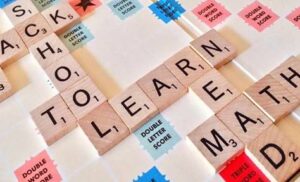In today’s rapidly evolving world, education must prepare students not only for the challenges of the present but also for the uncertainties of the future. The traditional STEM (Science, Technology, Engineering, and Mathematics) curriculum has been the cornerstone of scientific and technical education over the past decade. However, there’s a growing recognition that to thrive in a dynamic global landscape, students need more than just analytical skills—they need creativity, adaptability, and the ability to think divergently, an education expert says.
“STEAM education is an innovative approach that integrates the arts, represented by the “A” in STEAM, into the STEM framework,” says Dumi Manganye, Academic Advisor: Data & EdTech at ADvTECH Schools.
“Integrating arts into the STEM framework ensures that students are exposed to holistic learning throughout their academic journey. By combining the sciences with the arts, STEAM education promotes a more holistic understanding of the world, recognising that creativity, aesthetics, and emotional intelligence are essential components of a well-rounded education. When students engage in artistic expression alongside scientific exploration, they develop a deeper appreciation for both disciplines,” he says.
STEM alone tends to focus on “finding the right answer”, whereas incorporating art encourages divergent thinking. Divergent exploration ensures the consideration of multiple solutions, embracing ambiguity, and thinking outside the box, says Manganye.
“When we integrate arts into the traditional STEM curriculum, we create an environment where students can innovate, experiment and invent. Whether it’s designing a sustainable building, composing a musical piece, or creating a digital animation, the arts inspire novel approaches and imaginative solutions.”

Schools and educators therefore play a pivotal role in making STEAM a reality. ADvTECH Schools, such as Crawford International, Pinnacle Colleges, Trinityhouse, Niche schools and schools in the rest of Africa, have therefore sought to ensure their pioneering STEM offering integrates holistically into arts education.
“We achieve this by assigning projects that require both technical expertise and creative expression. Our assessments evaluate both convergent and divergent skills. Assessments shouldn’t merely test knowledge; they should also gauge creativity, collaboration and originality,” says Manganye.
“As educators equipping the next generation of leaders, it is our duty to ensure we develop those skills that will empower our future innovators. The job market is ever-evolving, and future employers will seek individuals who can adapt, communicate, and innovate.
“STEAM graduates possess a unique blend of skills—they can code, analyse data, and also communicate their findings through compelling visualisations or persuasive narratives. Whether they become engineers, designers, or entrepreneurs, they’re better equipped to thrive in a world where boundaries between disciplines blur.”

